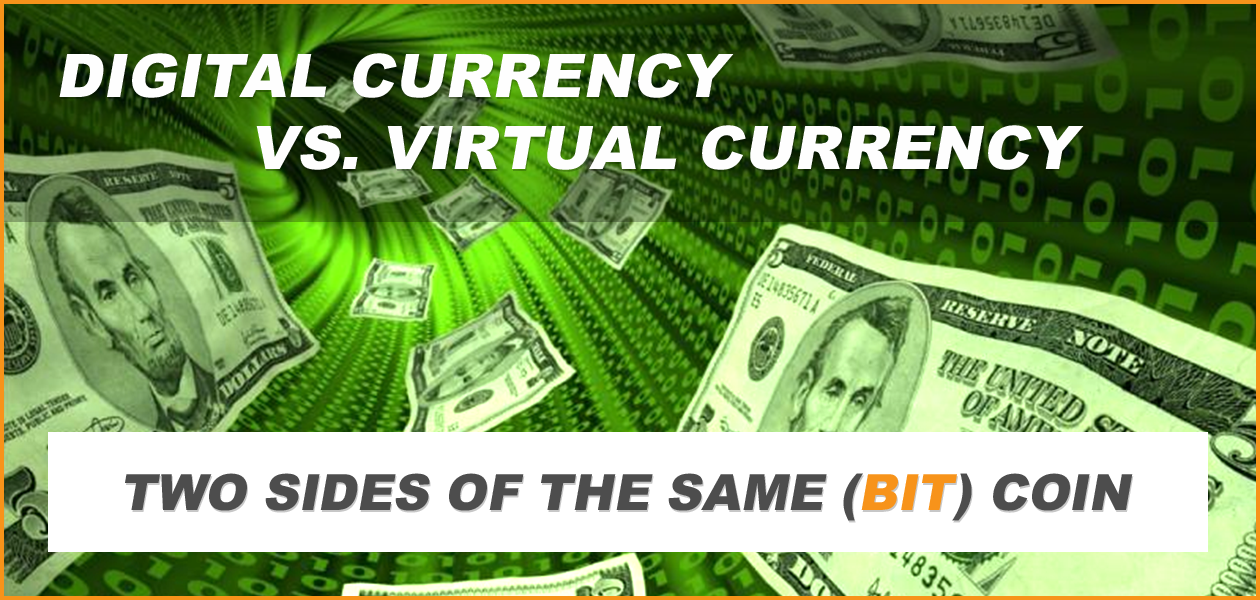
If you like money, you will love this article.
New Money: Digital Currency, Virtual Currency, and What It All Means
For generations, the promise of “cold hard cash” has motivated people to work hard, to divulge information, to cover-up information, and everything in between. Though the allure of financial gain is not in danger of waning anytime soon, currency in this particular form may very well become obsolete as e-commerce grows more sophisticated and people become more inclined to chase virtual currency like the Bitcoin than they are to chase paper.
Money Talk: The Difference between Digital and Virtual Currency
The shift from cold hard cash to virtual currency can be traced to the advent of digital currency. The most well-known digital currency network, PayPal, was founded in 1998. PayPal and subsequent digital currency networks are built on the existing financial infrastructure of bank accounts, allowing users to send and receive traditional money over the Internet or to use the service as a sort of new age credit card for online shopping.
Services like Google Wallet and Coin take this model a step further. Introduced in 2011, Google Wallet allows users to store things like debit cards, credit cards, and gift cards in their mobile phone. Users can make purchases online or in person at establishments with Google Wallet-enabled checkout stations. Google reimburses the merchants involved free of charge. Startup company, Coin, has invented a similar product. Coin has recently begun shipping the first of its eponymous digital credit cards. A thin device, Coin allows users to store up to eight debit, credit, gift, loyalty, and membership cards at once. Its developers promise users that their Coin can be swiped anywhere that accepts the plastic version of the cards it holds. By making traditional payment methods mobile, Google Wallet and Coin bridge the gap between digital and virtual currency.
Virtual currency solely exists online. It has no physical counterpart and is not backed by the government. Though programmers have been developing the concept since the early 1990s, the introduction of cryptocurrency-based payment system, Bitcoin, in 2008, primed the virtual economy to be the way of the future. In lieu of a political system, cryptocurrencies like Bitcoin are governed by algorithms. The algorithms determine the release of virtual coins at a decreasing rate over time until a final, predetermined, worldwide supply is reached. To obtain these virtual coins, one must solve mathematical problems, which grow more complex as the supply dwindles. This process is called, “mining.” Those who mine digital coins often team with other miners and/or invest in special hardware to solve the problems. Once earned, virtual coins can be transferred over the Internet on a person-to-person level and spent at participating businesses such as online retail website, Overstock.
Two Sides of the Same (Bit) Coin
Individuals and businesses alike enjoy the simplicity and convenience digital currency networks offer. PayPal alone boasts 148 million active accounts. This is not to say that there is no downside to storing and transferring money online. Many services charge processing fees. Amazon Payments forbids users from withdrawing less than $10.00 at a time. Even the popular PayPal has its flaws. The company has been criticized for its website’s frustrating glitches and is notorious for its rude customer service representatives. Indeed, there are entire websites dedicated to PayPal’s shortcomings.
Intermediary service, Google Wallet, has not made the impact its manufacturer intended, a situation that may be at least partially due to the discovery of a security flaw in 2012. Time will tell how fellow bridge service, Coin, fares, but the device already has its naysayers.
Fans of virtual currency cite a number of reasons for no longer being all about the Benjamins. Philanthropic Microsoft founder, Bill Gates, believes the impoverished can benefit from virtual currency’s reduced transaction costs. Some claim that recent events have caused them to mistrust the traditional banking system. Others appreciate that cryptocurrency can be used in any country, making travel easier. However, detractors argue that virtual currency’s security and convenience is a myth. Virtual currency markets are not immune to hackers, fraudsters, or thieves and while the online bartering of virtual coins between peers has become commonplace, enterprises have been slow to accept this form of payment.
Another Day, Another Dollar
The virtual economy is still fairly new, and, truth be told, an early model of anything, is risky. Yet even in its crude form, the virtual economy threatens to replace the traditional banking system and the digital currency networks that sustain it. Though not large, the number of businesses that accept leading virtual currency, Bitcoin, is growing. Approximately 15,000 products and services are priced exclusively in Bitcoin. Even if Bitcoin falls by the wayside, experts remain confident that virtual currency is here to stay. They speculate that, just as music exchange service, Napster’s short-lived success opened the door for peer-to-peer file sharing, the reign of Bitcoin may simply be the catalyst to a virtual currency revolution.
And just like that, cryptocurrency is no longer cryptic. Keep reading our blog posts to stay on top of everything in the rapidly changing technology world!
